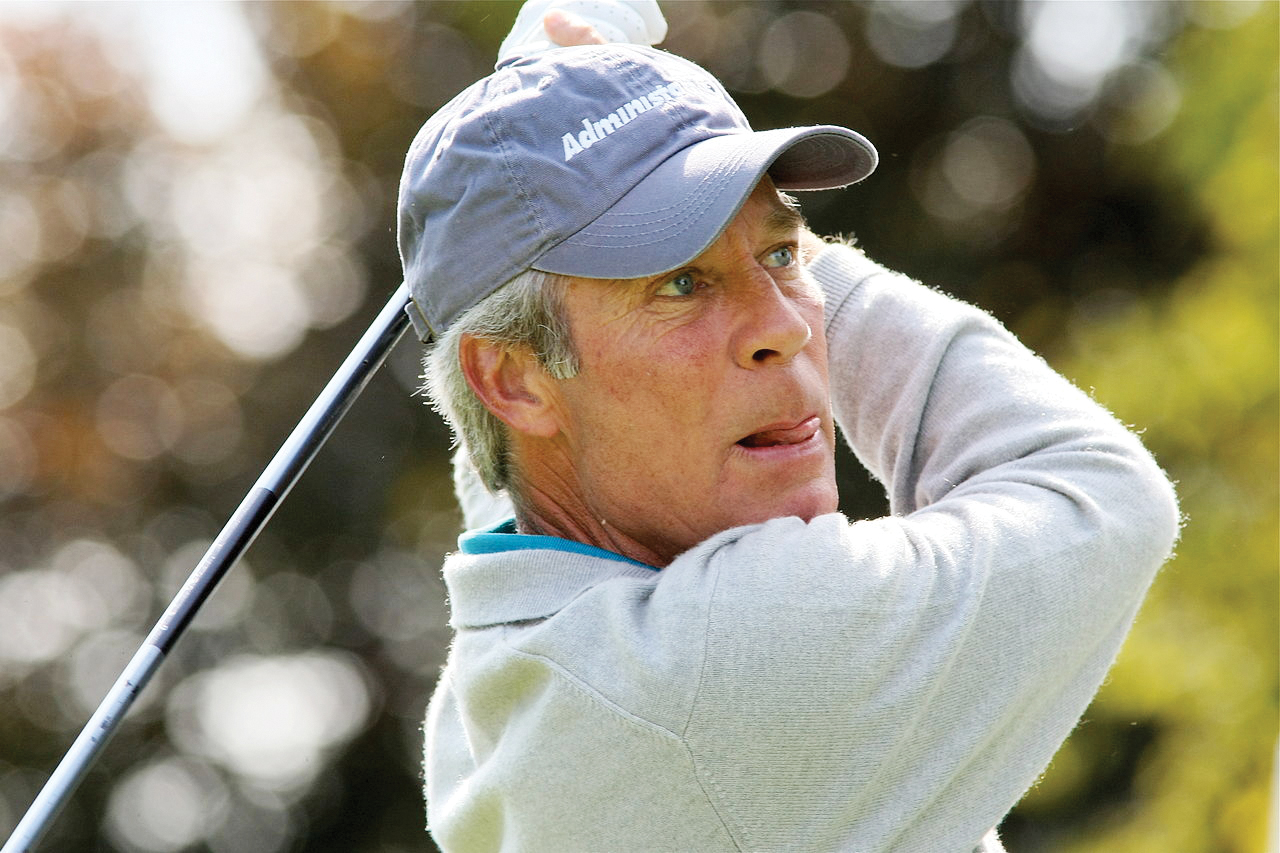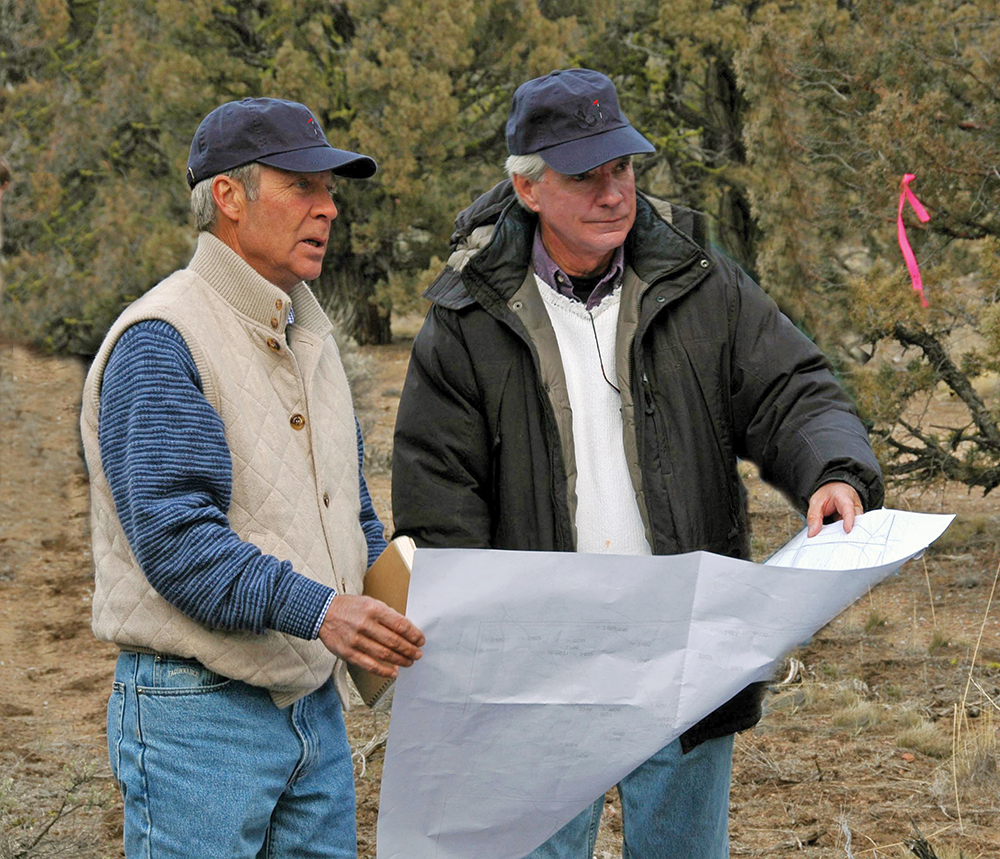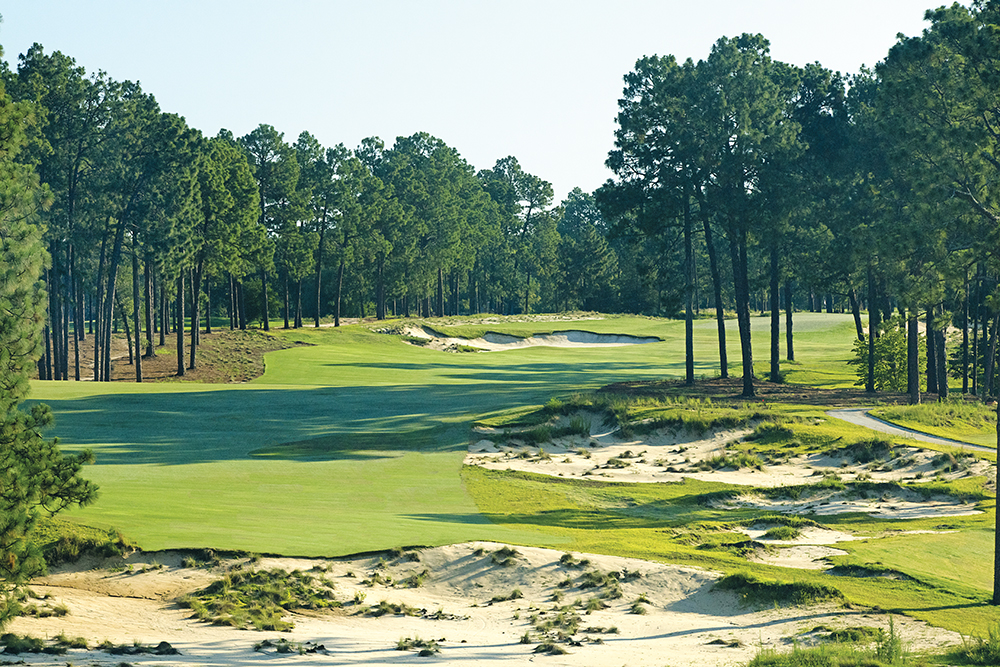 Austin native Ben Crenshaw has been successful in almost everything he has touched in his 66 years of a full golfing life lived out in Central Texas.
Austin native Ben Crenshaw has been successful in almost everything he has touched in his 66 years of a full golfing life lived out in Central Texas.
From Lone Star junior golf star at Austin High School to NCAA and individual golf champion at the University of Texas. A victory in his first-ever PGA Tour event, two-time Masters champion, inspirational Ryder Cup captain and Texas, plus World Golf Hall of Fame inductee, Crenshaw has done it all in the green grass golfing world both on the course and off.
But as he stood alongside the 18th fairway at the new Trinity Forest Golf Course in Dallas, on a sunny afternoon at the first-year of the PGA Tour’s Byron Nelson Championship, which he designed along with longtime partner Bill Coore, Crenshaw said he had found his true calling.
For while he spent the majority of his life playing golf at all levels, dawn to dusk with many, many amateur and professional golf titles and millions of dollar won, Crenshaw said he would always like to be remembered for the courses he created as one of the leading golf architects in the world.
Since 1986, Crenshaw and Coore have designed and help build some of the finest and most famous golf courses in the U.S.
His contributions in Texas include the Crenshaw course at the Barton Creek Resort and Austin Golf Club, which he considers his home club, along with Trinity Forest. He has done renovation work on some of the finest courses in the state, plus built famed American courses such as Sand Hills in Nebraska, Fairs Head in Long Island, New York, The Dormie Club in Pinehurst, Talking Stick in Scottsdale, and The Plantation Course in Maui, Hawaii along with many more.
While he only rarely plays on the Champions Tour, has stopped playing in the Masters Golf tournament and is more likely to play for fun, if he had the time, than for a job, Crenshaw said he would always like to be in the golf architecture business.
He’s still active in his unwavering support of all University of Texas athletics and is widely respected as one of golf’s great historians, sportsmen and spokesmen.
But he said the dirt which he and Coore crafted into green grass greatness is where he hopes to make his lasting contribution to the game he will always love.
 While holding court at Trinity Forest, Crenshaw was happy to talk with OTL Contributor Art Stricklin about his love for architecture, plus his greatest on-course joy as two-time Masters Champion.
While holding court at Trinity Forest, Crenshaw was happy to talk with OTL Contributor Art Stricklin about his love for architecture, plus his greatest on-course joy as two-time Masters Champion.
OTL: Having seen the PGA Tour hold its first tournament on your links-style Trinity Forest, which is radically different than anything players see in the U.S., what does that means for the future of golf?
BEN CRENSHAW: Well hopefully, it will show other tournaments the possibility of holding tournaments on unique courses that other players may like. I think this is something certainly new from what they see in the U.S., but I don’t know that we should ever be in the position that there is only one way to play a hole or just one shot you have to hit to be successful.
OTL: What would you like to see as this tournament goes further; another one at Trinity Forest or other PGA Tour events?
BC: We want to bring creativity into the game. We want to bring putting and chipping and decisions into the game. Not just how far you hit the ball, but where you hit it and how and what is it going to do when it hits the ground. That is what you see all the time in Scotland and what I hope to interject here.
OTL: How much do you take player comments into your equation when you’re designing a course like this?
BC: Certainly you want them to enjoy it and most of them are free to share what they think. The feedback has been very positive for this first year for which we are very grateful.
OTL: How did you first become interested in golf architecture and when did you know it would grow to become what you enjoy most about golf?
BC: Well, it first started when I made the 1968 U.S. Junior Amateur at the Country Club in Brookline, Mass., It was the first time I had ever been to the Northeast and it was an eye-opening experience to see those thick trees and deep rough, hole shapes and lush greens. Coming from Texas (as a high school sophomore) I had never seen anything like that before so it was pretty incredible.
OTL: A few years later, you made your first appearance in the Masters Golf Tournament as an amateur in 1972, so how did that advance your architecture as well?
BC: Well, like everyone else says, it looks so much different than on TV. It’s so much prettier than on TV and so much hillier than you would think. Its like, ‘wow, look at those mounds.’ Other than one trip to the East Coast, I had really never been out of Texas much. I was fascinated by the steepness of the fairways and the undulations of the greens. Really, undulation is the soul of golf. I’m sure it affected me in later years.
OTL: While your on-course career was hugely successful, winning the first tournament you ever played as a professional (the 1973 Texas Open), along with the Colonial and the Byron Nelson, you will always be tied to the Masters and your two wins there in 1984 and 1995. What does that tournament mean to you, especially the decision in 2015 to stop playing there?
BC: I just love it so much in so many different ways. I’m sure I could have gone on and played several more years. Nobody was asking me to leave, but in my head and in my heart I just think this is the right thing to do. Just pull over to the side of the road and let others do it.
OTL: Winning in 1984 was special, because it was your first major championship at your favorite place, but winning in 1995, the week you buried your mentor Harvey Penick, I’m guessing that is a memorable Masters which will never be forgotten.
BC: To do something personally like that to honor Harvey and his memory, it’s still so special I can’t even believe it.
OTL: How were you able to compose yourself to get the win, especially with that memorable shot on the 18th green where you were fighting tears after making the final winning putt?
BC: It was just so special, Art, to this day I still don’t know how it happened. It was just Harvey and his presence.
OTL: In the past, people have written or said that you made a Faustian bargain when you won the Masters in 1995, and you never won another professional golf tournament again. Are you OK with having that be your last victory?
BC: Absolutely, that would be fine with me. If that’s the last one I ever win, I’m totally satisfied with that win and honoring Harvey like that.
OTL: I know you love your time at the Masters and Augusta National; do you have any regrets there?
BC: Only one, really. I never got to meet Bob Jones. I know over the years I’ve hounded (member) Charlie Yates for Bob Jones stories all the time, but I regret I never got to meet him in person.
 OTL: With golf coming to an end, you still have plenty to keep you active including your architecture work. You completed your latest project just south of downtown Dallas, Trinity Forest, which will serve as the home of the PGA Tour Byron Nelson Championship. What do you like about staying connected to the game like that?
OTL: With golf coming to an end, you still have plenty to keep you active including your architecture work. You completed your latest project just south of downtown Dallas, Trinity Forest, which will serve as the home of the PGA Tour Byron Nelson Championship. What do you like about staying connected to the game like that?
BC: This allows me to stay close to the game when I am not playing. I’ve wanted to slow down for several years and this will allow me to continue to do it.
QTL: What’s different about preparing to play in a tournament and preparing to work on a course?
BC: When you commit to a tournament, you have to be there all week. Here (at a course) I can be there 2-3 days and still get all my work done and be able to go home.
OTL: Was there anything about your decades at Augusta which has helped you as an architect?
BC: I have always believed that undulation is the soul of golf and Augusta National has more undulation on the greens than possibly anywhere. Architects Bob Jones and Alister MacKenzie were so smart the way that they designed this. It will not fall victim to the challenge of today or tomorrow because of the way it forces you to use strategy on every hole to defend itself with its greens. All of golf and golf courses could learn from that. I know I always have. My philosophy as an architect is to see what the land tells us and try to employ a minimalist nature on most sites
OTL: Do you feel like architecture could be your ultimate contribution to the game?
BC: It’s endlessly fascinating when you see what the land gives and you see what you can do with the different landscapes. It’s always a challenge to see what you can do to create something special.
By Art Stricklin